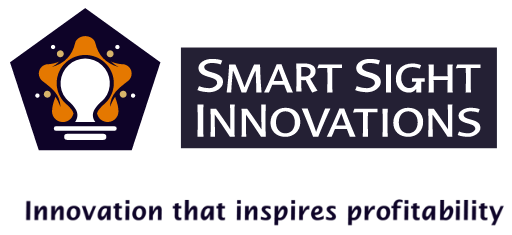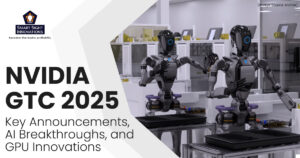
What Is the Stargate Project?
The Stargate Project is a cutting-edge AI initiative designed as a joint venture between leading technology firms, U.S. agencies, and academic research institutions. It represents a monumental initiative in the realm of artificial intelligence (AI).

This ambitious venture, spearheaded by OpenAI, SoftBank, Oracle, and investment firm MGX, aims to invest a staggering $500 billion over the next four years to develop AI infrastructure across the United States. The project is not merely an investment in technology; it is a strategic move to secure American leadership in the global AI landscape amid intensifying competition from nations like China.
Why Was the Stargate Project Created?
The Stargate Project’s primary objective is to create a robust network of data centers that will serve as the backbone for advanced AI applications, including the pursuit of artificial general intelligence (AGI). This initiative is expected to generate jobs almost immediately and promises significant economic benefits by fostering innovation across various sectors, particularly healthcare and national security.
The announcement was made during a high-profile event at the White House, where serving President Donald Trump emphasized the project as a decisive step in ensuring that the U.S. maintains its technological edge in AI.

The Stargate Project is named after the 1994 film Stargate, drawing a parallel between the film’s portals to other worlds and the project’s goal of opening new frontiers in AI technology. The scale of investment and collaboration involved has led some commentators to liken it to the Manhattan Project, underscoring its potential impact on society and technology.
The significance of the Stargate Project extends beyond its financial implications. It embodies a critical response to the growing demand for computing power necessary for AI advancements. By establishing a comprehensive AI infrastructure, the project aims to facilitate breakthroughs that could transform industries ranging from healthcare by improving disease diagnosis and treatment, to climate change mitigation through innovative technologies.
Moreover, this initiative positions the U.S. as a leader in AI development at a time when global competition is fierce. The collaboration among major players like OpenAI, Oracle, and SoftBank highlights a united front in tackling challenges associated with AI deployment while also addressing ethical considerations surrounding its use.
The involvement of these tech giants ensures that cutting-edge technologies will be harnessed effectively, paving the way for significant advancements that could redefine human-computer interaction. As we move forward into an era dominated by AI, initiatives like Stargate will play a pivotal role in shaping not only technological landscapes but also socio-economic structures globally.
Key Players Involved

Announced on January 21, 2025, this project is backed by key players in the tech industry, including OpenAI, SoftBank, Oracle, and investment firm MGX. Each of these organizations brings unique strengths and resources to the table, positioning the Stargate Project as a significant force in the global AI arena.
OpenAI
OpenAI, known for its pioneering work in AI technologies, plays a crucial role in the Stargate Project. As the operational leader of the initiative, OpenAI is tasked with driving innovation and ensuring that the project aligns with its mission to develop safe and beneficial AI.
Sam Altman’s involvement in the Stargate Project reflects a strategic alignment with national interests and a commitment to advancing AI infrastructure in the U.S. OpenAI aims to leverage its expertise in machine learning and data science to build advanced AI models.
Altman emphasized that this initiative is not just about technological advancement but also about national security and economic growth. By collaborating with other major tech companies involved in Stargate, Altman aims to ensure that the project achieves its ambitious goals.
SoftBank
SoftBank’s CEO Masayoshi Son, serves as the financial backbone of the Stargate Project. He was named as the chairman of the Stargate Project. His vision for advancing AI, significant financial commitments, collaborative partnerships with leading tech firms, and strategic political engagement all contribute to making this initiative a landmark effort in securing America’s future in artificial intelligence.
The firm is renowned for its strategic investments in technology and telecommunications, which positions it well to support the financial needs of such an extensive initiative. By providing substantial funding, SoftBank not only facilitates the construction of state-of-the-art data centers but also aims to stimulate job creation across various sectors in the U.S., projecting over 100,000 new jobs as a direct result of this investment.
Son has articulated a vision that sees the Stargate Project as a pivotal step toward achieving Artificial General Intelligence (AGI) and ultimately Artificial Superintelligence. He believes that while AGI is an important milestone, the real goal should be to develop superintelligent systems capable of solving complex challenges that humanity faces.
At the launch, Son committed an initial $100 billion to kickstart the project, with aspirations to reach the full $500 billion investment over four years. This financial backing is critical for establishing the necessary infrastructure, including data centers and computational resources, which are essential for training advanced AI models.
Under Son’s leadership, the Stargate Project has brought together major tech players such as OpenAI, Oracle, Microsoft, and Nvidia. This collaborative approach is designed to leverage each partner’s strengths in AI research and development.
Oracle
Oracle’s role in the Stargate Project is pivotal due to its technological expertise and infrastructure capabilities. As a leading provider of cloud computing solutions and enterprise software, Oracle will collaborate closely with OpenAI and other partners to develop and operate advanced computing systems essential for AI applications.
The partnership builds on existing collaborations between Oracle and OpenAI, enhancing their combined ability to deliver cutting-edge AI solutions. Oracle’s involvement ensures that the project benefits from robust data management capabilities and scalable cloud infrastructure, critical for supporting large-scale AI training and deployment.
Larry Ellison, Oracle’s Chief Technology Officer, has emphasized the transformative potential of the Stargate Project in revolutionizing cancer treatment through AI. During the project’s announcement at the White House, Ellison highlighted that one of the key innovations stemming from the Stargate Project is the ability to detect cancer at an early stage using a simple blood test.
He explained that small fragments of tumors circulate in the bloodstream, making it possible for AI to analyze these blood samples to identify cancers that pose a serious threat to patients’ health. This capability marks a significant advancement in cancer diagnostics, allowing for timely intervention and development of personalized cancer vaccines.
Beyond early detection, Ellison discussed the groundbreaking potential for creating personalized cancer vaccines tailored to individual patients. Once a tumor is gene-sequenced, AI can be employed to design a specific mRNA vaccine aimed at combating that particular type of cancer.
Remarkably, Ellison stated that this vaccine could be produced robotically within approximately 48 hours, showcasing the speed and efficiency that AI can bring to healthcare solutions. Ellison noted that the project not only aims to improve individual health outcomes but also seeks to enhance overall healthcare delivery by providing doctors with advanced tools and insights derived from electronic health records.
Other Key Partners
-
MGX
MGX, an investment arm of the United Arab Emirates government, adds an international dimension to the Stargate Project. MGX’s participation signifies confidence in the project’s potential to drive innovation and economic growth. By aligning with prominent American tech firms, MGX aims to enhance its portfolio while contributing to a project that promises significant advancements in AI infrastructure.
-
Microsoft
As a longstanding partner of OpenAI, Microsoft plays a significant role in the Stargate Project. The collaboration includes access to Microsoft’s Azure cloud services, which will be vital for hosting AI models and processing large datasets.
-
Nvidia
Known for its cutting-edge graphics processing units (GPUs), Nvidia’s involvement is critical for providing the necessary hardware to handle the demanding computational tasks associated with AI training and deployment. Their technology is fundamental to enabling advanced machine learning algorithms.
-
Arm
A British semiconductor and software design company, Arm is crucial for providing the chip architecture needed for various AI applications. Their technology is essential for developing efficient and powerful computing solutions that will support the project’s ambitious goals.
Locations and Data Centers

A critical component of the Stargate Project is the establishment of data centers across the country, with the first site currently under construction in Abilene, Texas, and is expected to cost approximately $1.1 billion. The data center aims to provide the computational power necessary for training advanced AI models and supporting various applications across multiple sectors.
Oracle’s Chief Technology Officer, Larry Ellison, emphasized the significance of this location during the project’s announcement. He noted that while ten buildings are currently planned for the Abilene site, there are intentions to expand to a total of 20 buildings and explore additional locations throughout the U.S. This expansion reflects the project’s ambition to create a comprehensive network of facilities capable of supporting the growing demands of AI technology.
To support the energy needs of these data centers, a natural gas plant will be constructed on-site in Abilene. The integration of an on-site power generation source is crucial for ensuring that the data centers can operate continuously and efficiently, meeting the high energy demands associated with AI workloads.














